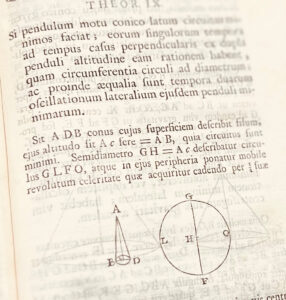 By Emma Laws, Cathedral Librarian
By Emma Laws, Cathedral Librarian
British Science Week (8-17 March) is a ten-day celebration of science, technology, engineering and mathematics. We are celebrating this year’s theme of ‘Time’ in the shadow of the Cathedral’s famous medieval clock with a display of timeless treasures from the Cathedral Library.
It was Galileo (1564-1642) who apparently watched a chandelier swinging back and forth in Pisa Cathedral and developed theories about the movement of a pendulum. In 1656, a Dutch scientist called Christiaan Huygens (1629-1695) built on Galileo’s ideas to develop the first pendulum clock. Huygen’s invention spread across Europe and was used to make clocks until the 1930s. However, a pendulum was not very portable – imagine attempting to keep time with a pendulum clock on a ship on the ocean waves.
In 1675, Huygens patented a design for a pocket watch using a balance spring instead of a pendulum. Though he probably got the idea from Robert Hooke (1635-1703), Huygen’s invention revolutionised time-keeping and remains the basis for the mechanism in a modern wristwatch.